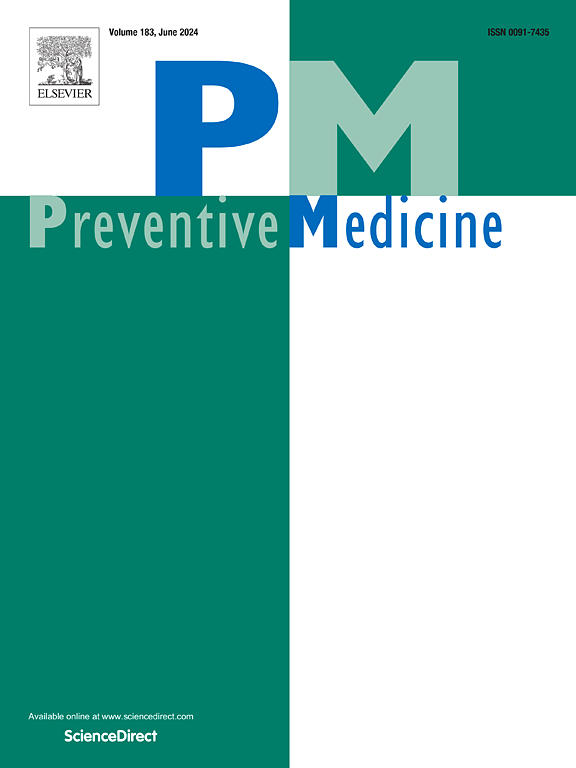A content analysis of cannabis edible product characteristics, packaging features, and online promotions
IF 3.2
2区 医学
Q1 MEDICINE, GENERAL & INTERNAL
引用次数: 0
Abstract
Objective
As legal cannabis markets expand in the United States, edibles have become increasingly popular, particularly among youth. This study aimed to assess cannabis edible product characteristics, packaging features, and online promotions that may be appealing or misleading to consumers.
Methods
During November 2023 and August 2024, we identified active online cannabis dispensaries in the United States from the National Cannabis Industry Association's member directory and conducted a content analysis of 2282 cannabis edible products to assess front-of-package information on product characteristics, child-oriented features, health and non-health claims, warnings, as well as online promotional strategies.
Results
Over half of the products were gummies, and more than 80 % contained at least 100 mg of total tetrahydrocannabinol (THC). Few packages included individual packaging or serving size information. Child-appealing elements were prevalent: over 20 % of products displayed animated or human-like characters, nearly all products were flavored with fruit flavor being the most common, and more than half featured packaging with four or more colors. Non-health claims appeared on 27.7 % of products, cannabis-infused labels on 48.1 %, and underage use warnings on 16.4 %. Product-specific promotions were present for 77.0 % of products, and nearly all had storewide promotions.
Conclusions
Cannabis companies frequently utilized marketing strategies that may make edibles appealing or misleading to consumers, particularly youth. Further research understanding how these marketing strategies influence consumer perceptions and appeal is needed to inform regulations on cannabis packaging and promotion.
对大麻食用产品特点、包装特点、网络促销进行内容分析。
目标:随着合法大麻市场在美国的扩大,可食用大麻越来越受欢迎,尤其是在年轻人中。本研究旨在评估大麻可食用产品的特性,包装特征,以及可能吸引或误导消费者的在线促销。方法:在2023年11月至2024年8月期间,我们从美国国家大麻产业协会的成员目录中确定了活跃的在线大麻药房,并对2282种大麻食用产品进行了内容分析,以评估产品特征,儿童特征,健康和非健康声明,警告以及在线促销策略的包装前信息。结果:半数以上的产品为胶状,80% 以上的产品中总四氢大麻酚(THC)含量至少为100 mg。很少有包装包括个人包装或服务大小信息。吸引儿童的元素很普遍:超过20% %的产品展示了动画或人形角色,几乎所有产品都以水果味调味,这是最常见的,超过一半的产品具有四种或更多颜色的包装。非健康声明出现在27.7% %的产品上,含有大麻的标签出现在48.1% %的产品上,未成年人使用警告出现在16.4% %的产品上。77.0 %的产品有特定产品的促销,几乎所有的产品都有全店促销。结论:大麻公司经常采用可能使可食用产品吸引或误导消费者,特别是年轻人的营销策略。需要进一步研究了解这些营销战略如何影响消费者的看法和吸引力,以便为大麻包装和促销条例提供信息。
本文章由计算机程序翻译,如有差异,请以英文原文为准。
求助全文
约1分钟内获得全文
求助全文
来源期刊

Preventive medicine
医学-公共卫生、环境卫生与职业卫生
CiteScore
7.70
自引率
3.90%
发文量
0
审稿时长
42 days
期刊介绍:
Founded in 1972 by Ernst Wynder, Preventive Medicine is an international scholarly journal that provides prompt publication of original articles on the science and practice of disease prevention, health promotion, and public health policymaking. Preventive Medicine aims to reward innovation. It will favor insightful observational studies, thoughtful explorations of health data, unsuspected new angles for existing hypotheses, robust randomized controlled trials, and impartial systematic reviews. Preventive Medicine''s ultimate goal is to publish research that will have an impact on the work of practitioners of disease prevention and health promotion, as well as of related disciplines.
 求助内容:
求助内容: 应助结果提醒方式:
应助结果提醒方式:


